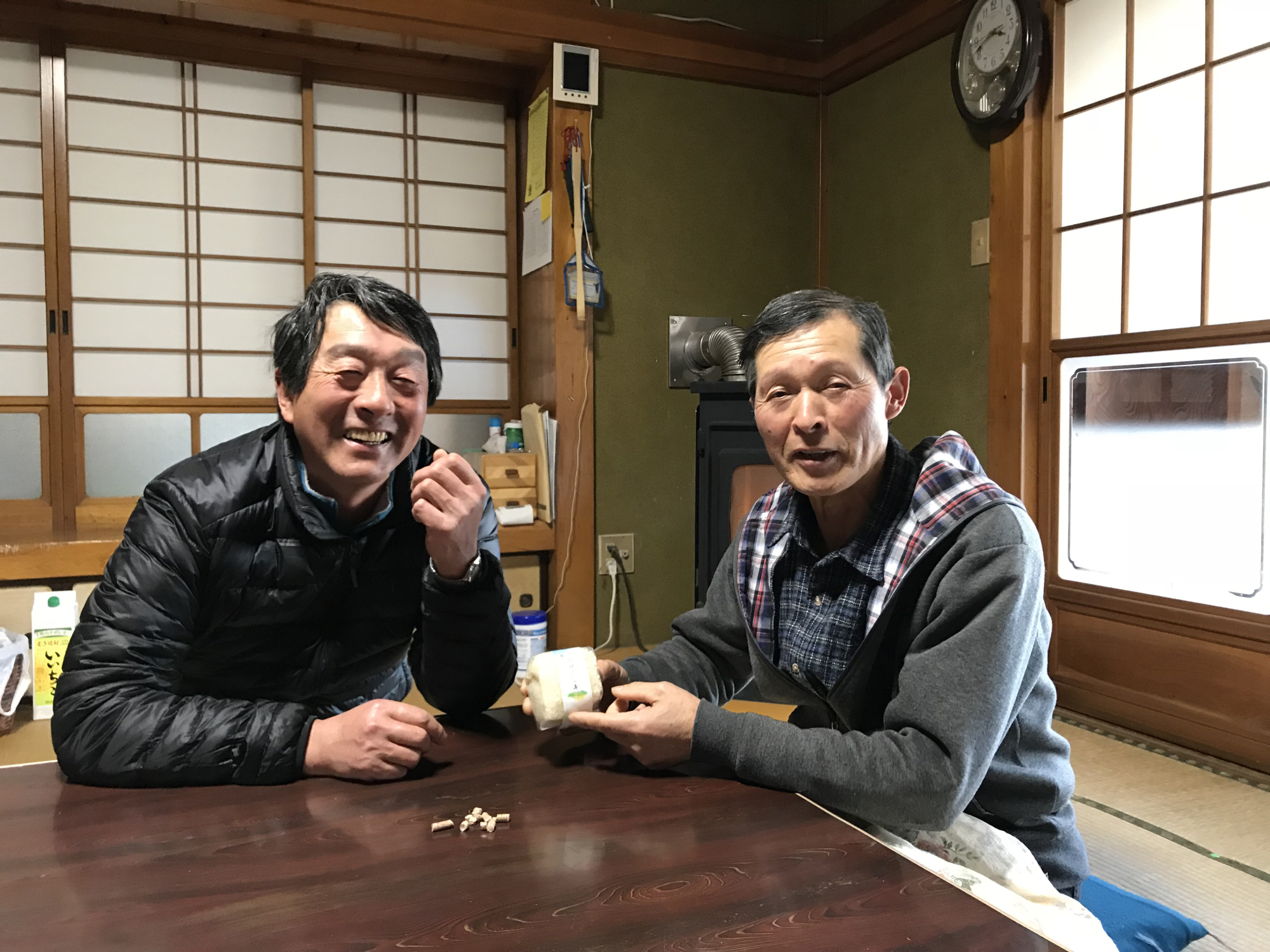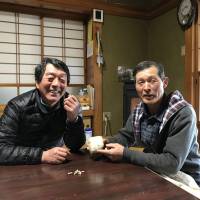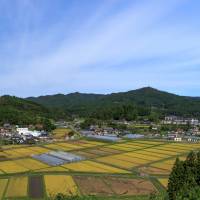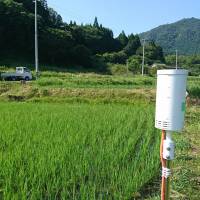Hiroyuki Abe and Katsuyoshi Abe are growing Sasanishiki, a brand of rice that had once all but disappeared. Their rice fields are in Iriya, the only district in Minamisanriku, Miyagi Prefecture, that narrowly escaped the tsunami disaster following the Great East Japan Earthquake.
They are not just growing it, but reviving it in a better and more sustainable way through a combination of modern technologies and the traditional way of growing rice without chemical fertilizers or pesticides.
Sasanishiki used to be one of the most renowned brands of Japanese rice along with Koshihikari. Many sushi chefs preferred its light flavor and lower stickiness compared with other kinds of rice.
However, it was susceptible to cold weather damage and bacterial rice blight. Farmers in the coastal areas of Miyagi Prefecture struggled with these issues, trying different kinds of chemical fertilizers and pesticides over the years, with little success. They simply stopped making Sasanishiki after the crop suffered major cold weather damage in 1993.
Ever since, Koshihikari and other rice brands derived from Koshihikari have dominated the rice production of the area, but they are also not completely free from temperature and pest issues.
"Pesticides work at first, but soon bugs become resistant and we use more pesticides. It's a cat-and-mouse game," said Hiroyuki Abe. To get out of this endless loop, he decided to begin chemical-free production of Sasanishiki in 2012 because he knew from experience that Sasanishiki was the kind of rice that grew poorly in a chemical environment.
His trial has received technical support from NTT Docomo, Inc. and Amita Holdings Co. From the second year, Katsuyoshi Abe, another farmer in the neighborhood, joined the project.
Among the various techniques they tried during the first few years, what seemed to have worked best was a method based on water level management that was developed by Hideaki Akutsu, an NTT Docomo expert on organic farming technologies.
Rice seedlings are grown to a certain stage before they are transplanted to paddies filled with water. Much like the seedlings, weeds at the bottom of the paddies also need sufficient sunlight to grow. As rice seedlings take in enough sunlight from the leaves above the water, there is no need for sunlight to reach the bottom of the paddies, allowing the weeds to grow.
The easiest way to cut down the amount of sunlight reaching the bottom is to raise the water level. "Isn't it fantastic? It's a lot of work to spray herbicides on the paddies. This method is beneficial for both humans and the environment," said Katsuyoshi Abe.
The farmers are making the extra effort to achieve this. Rice seedlings that are usually sold are only about 30 days or less from sprouting and are about 12 centimeters tall with only a few leaves. In contrast, Akutsu's method requires the seedlings to be grown for 45 days before transplanting.
For the seedlings to stick out of water to receive enough sunlight, including those in deeper paddies, they need to be close to 20 centimeters tall with more than just a few leaves. Taller, more mature seedlings are also more resilient against pest infestation and diseases. They also have the ability to make the best of what is available because they have not been over-nourished by fertilizers.
The water levels are supervised using sensors installed in the corners of the rice paddies. The data is updated in an application developed by NTT Docomo in real time, and it can be viewed on smartphones and tablets.
When the water is low, they simply need to raise the flashboard installed in the stream to control the inflow of the nutrient water coming down from the surrounding mountains.
The organically grown Sasanishiki is distributed to consumers via a membership service that connects the farmers and customers directly through various activities such as rice harvesting events, as well as the delivery of rice and other local agriculture and marine products.
"Through this project, we are trying to prove that non-chemical farming of rice can actually work well. Additionally, we want to be the model to show that there are ways to revitalize the region by involving consumers," said Keiichi Yamamoto from NTT Docomo who has been engaged in the project from the early stages.
This series introduces municipalities and local companies promoting the beauty and excellence of deep Japan.






















With your current subscription plan you can comment on stories. However, before writing your first comment, please create a display name in the Profile section of your subscriber account page.